I’ve been a fan of Sandwich since it began in 2010. In fact, I’ve tried to hire them for a job in the past, but the stars haven’t aligned—yet. Adam is a rare creative in that he knows where his strengths and interests overlap. He created “the explainer video” genre which proved that humor can help educate us on things we don’t know we need yet. He’s a pro and unapologetically human, which makes him as memorable as his work.
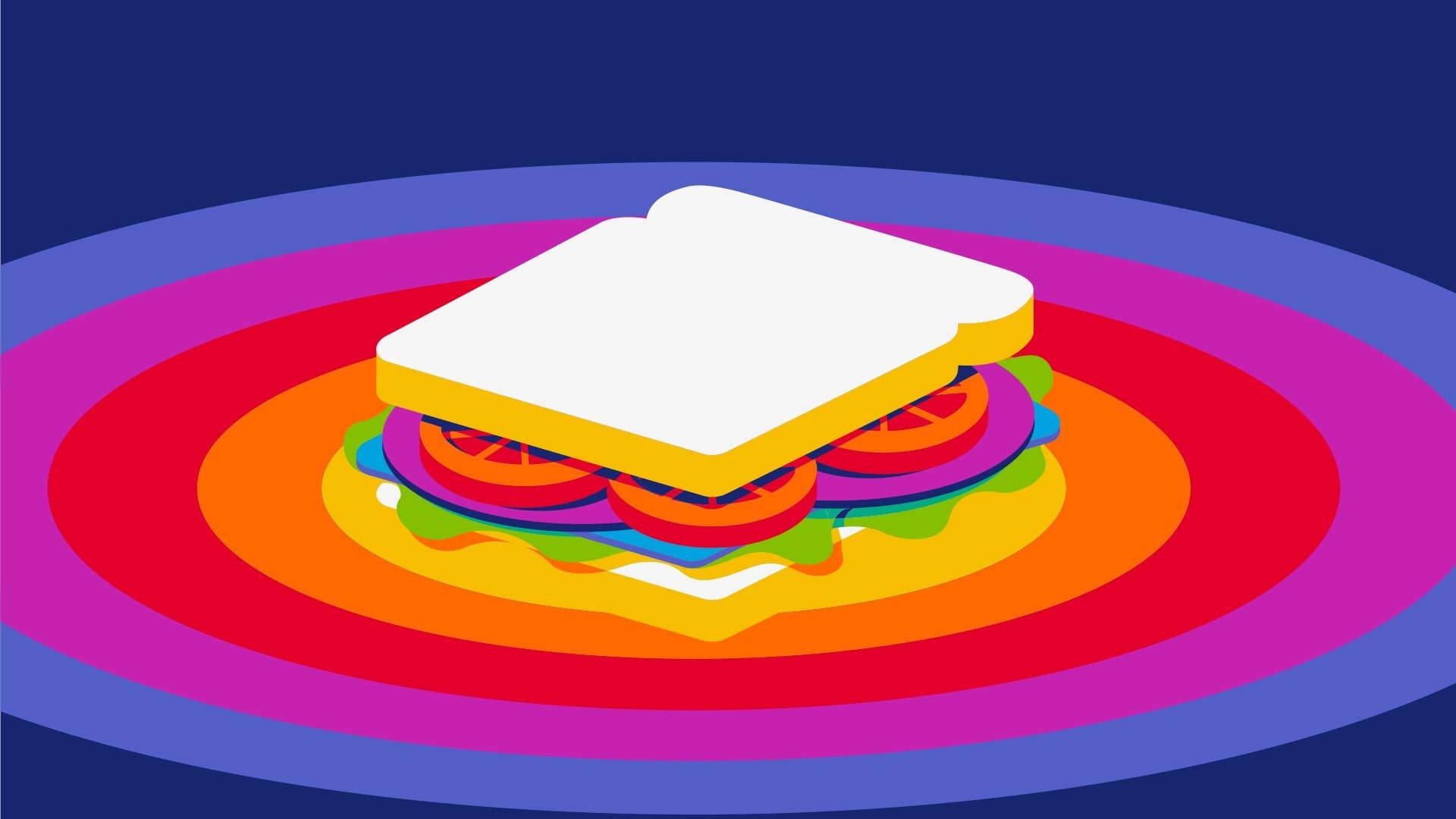
Sandwich recently celebrated it’s 10-year anniversary. Based in LA, they’ve created videos for iconic startups like AirBnB, Uber and Square, before they were iconic.
I love that you put your interviews on your site. I was watching one where you showed the Mike Teavee scene from Willy Wonka and the Chocolate Factory to make a point about white space. It gave me an interesting perspective on your work. If you were talking to someone who had never seen one of your videos before, how would you describe what you do and how you do it?
The simplest answer is trying to convey ideas about the digital world using physical space. As I became more fascinated by the digital world as a kid, I found that as the world of tech was becoming more interesting, I started thinking a lot about how do I represent the digital world using physical space? Just like they did in the Mike Teavee sequence in Willy Wonka where they have to represent this idea of vast abstract televisual space, right? They did what the Matrix did three decades later, which was really cool. It was like, “Okay, it’s white space.” It’s a concept which is familiar to designers, and it’s just this idea that the space infinite and we can fill it with artifacts of our choosing, and we can sort of construct a world. That’s what they did for Mike Teavee and it was really cool.
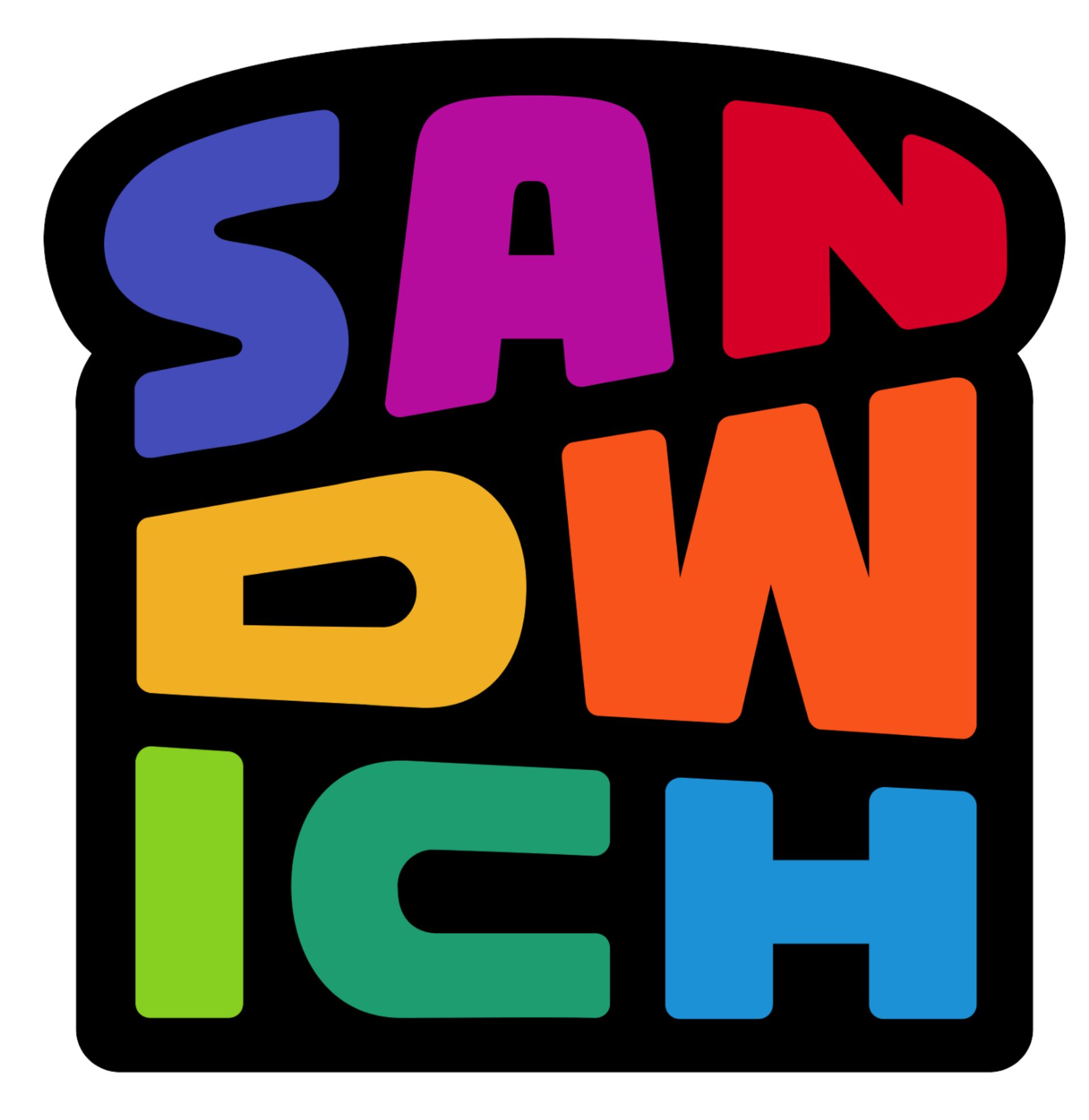
“We worked with designers Andrew Sloan and Bob Lenz in 2019 to do our rebrand. When this one popped up in a concept review session somewhere in the middle of the second round under the name “Flavor Town”, our jaws dropped to the floor and we all fell instantly in love because it is just so Sandwich.’
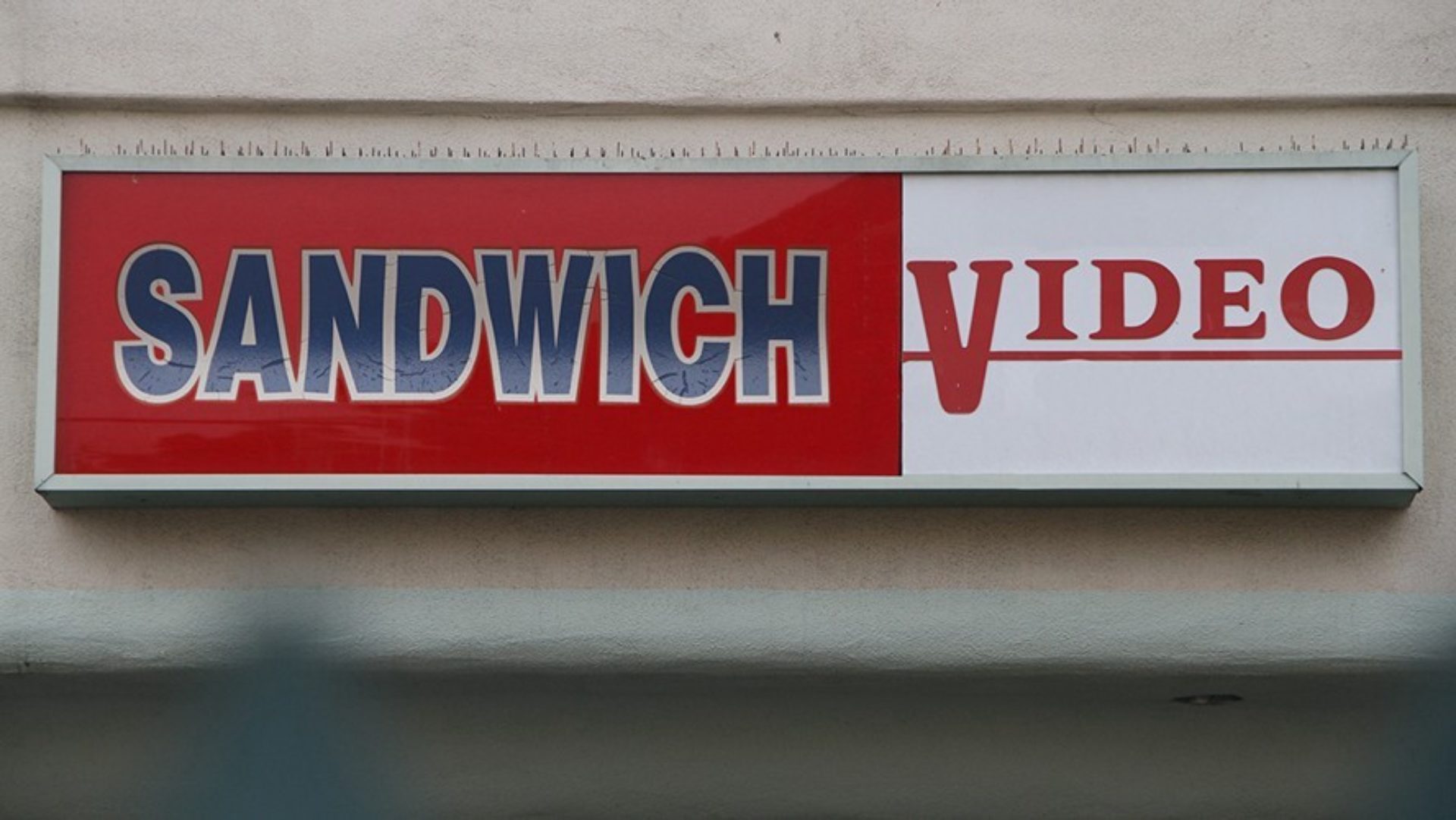
An early signage study of LA video stores in 2010 for early logo concepts. “I like things that are named like other things. A restaurant named like a power tool. A band named like a cereal. Like, is Sandwich Video a deli or a rental store? Do those even still exist?”
You have a philosophy about how to lean into accidents and make mistakes in the way that only you can. Where did that come from, and how has it served you?
It’s a sort of a known cultural concept in Japan. They call it wabi-sabi, the idea of making something as perfect as you can and then messing it up a little bit, because that act of messing it up a little bit is where you introduce chaos in the way that only you can. It’s not that imperfection is intentional in that regard for me, but I think that imperfection‚ an artifact of just being an individual, is where most interesting work comes from and ultimately that’s your voice. I’m no scientist, but your voice, your literal voice, the timbre of your voice is a series of disruptions to the flow of air which creates sound waves. And that’s true for any musical instrument. There are all these imperfections at different wavelengths and that’s what makes the instrument sound the way it does. No two trumpets sound the same, no two pianos sound the same, because they have different imperfections. The same is true with creative work as well.
Voice is definitely something which comes through on your work. I’m curious how the creative process works with a client and how do you keep things in the space you want to?
Yeah, it’s changed a little bit over the years as the clients we work with are changing and the marketing language changes a bit. When we first started out, maybe the first five years, we’d already developed subgenres of the work that we do. A startup would come to us and say, “Okay, here is our thing, we need people to know about it,” and then we would say, “Okay, well we can do this in five different ways. Which one do you want?” They would say, “Sure, okay. Cool, let’s try that,” and then we would do it. That was a fun wild west time to make creative work, when it was a little bit less supervised or dictated by a client.
Now we are working with clients who have stronger ideas about the approach or the strategy. Or maybe they’re coming with tons of background on the ways to communicate that they know will be successful or achieve results. That’s a more common approach for the creative development process now.
How did you feel about specialization? Initially you were the guy you’d go to when you have an app to do a video for your startup. Was that something you embraced?
Oh, 100% embraced it. I think it’s a wonderful space to be because there weren’t any other agencies doing that. I just accidentally hit on something with a lot of value and opportunity, and why wouldn’t I embrace that?
Maybe some of the subtext or implication of the question is did I feel limited by that as a filmmaker. My answer to that is no, because I’m not a frustrated movie maker. I do that thing that I do, and I like doing it, and there’s a need for it, and it has a good amount of value. So, I want to continue to do that.
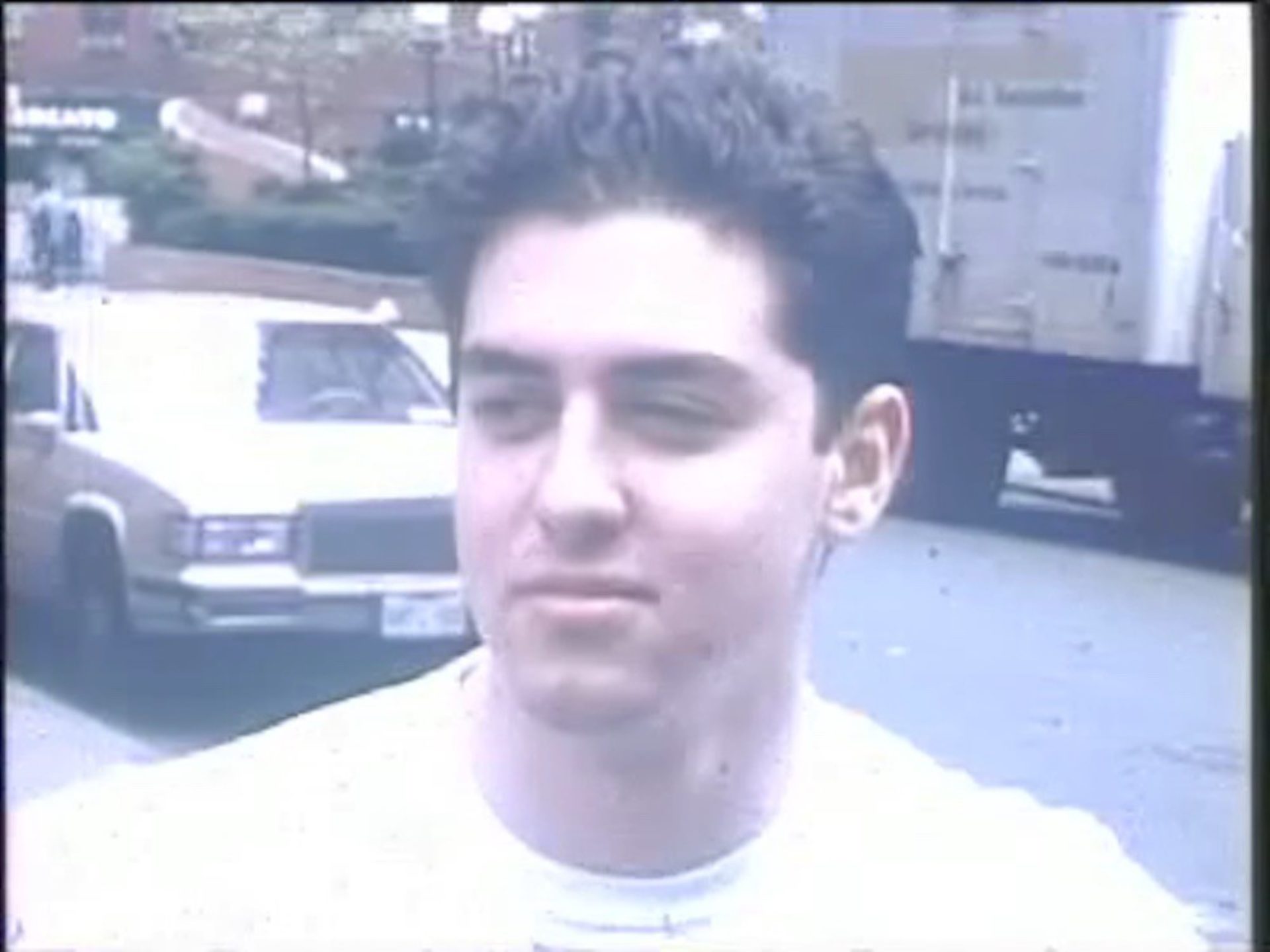
A young Adam in 1997, on Broadway in NYC, appearing in one of his 16mm shorts. Unbeknownst to him, this would be the first of many on-camera appearances.
In the earlier days you positioned yourself more as an educator than a storyteller. Is that still how you think about it?
I kind of do think that way still. I used to find the word “story” pretty distasteful in our work, just because I thought it was overused. It feels a little bit self-important and I think a lot of marketers were using it wrong. It took some maturing to understand what it actually meant, and I love when that happens. Now the way I understand story is that it’s taking a message and modeling it in a chronologically ordered path so that other people can appreciate the message the way it was intended.
A story to me is like making a message in time the way that a building is inking a message in space. I think there’s a lot of parallel between storytelling and architecture.
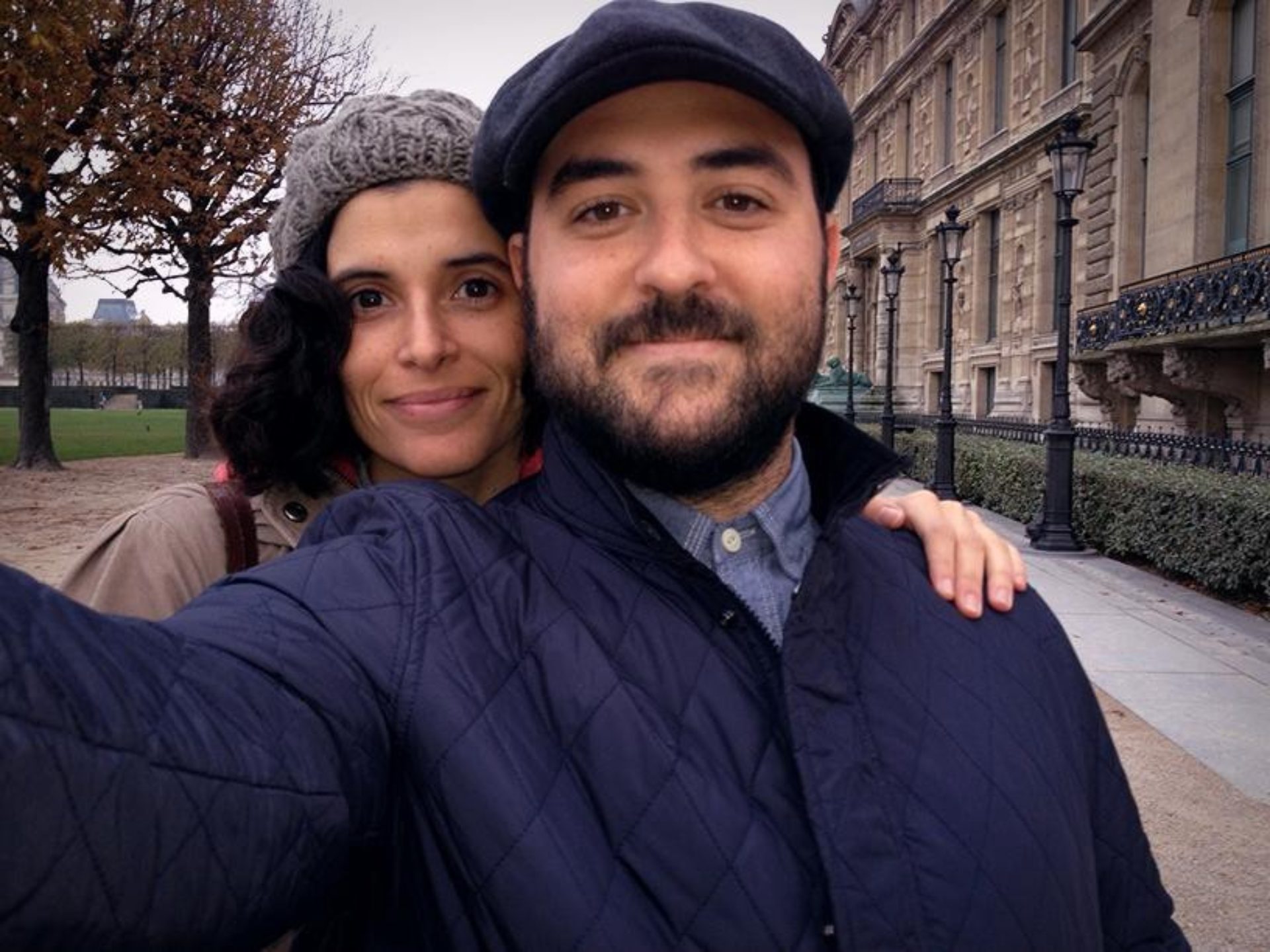
Adam with his partner Roxana in Paris. “She’s the love of my life and I like having her on my team.”
Tell me why you have a casting director on staff.
My partner, Roxana, who I’ve been with for 16 years, comes from a casting background. When I was starting up Sandwich, she figured out the pipeline for going out and finding non-union talent. Some of them were just great finds that had never gone out for an audition before. And we realized the tremendous value for that as a creative process, to go out and find untapped talent. Not only because you’re discovering new valuable talent, but also because you’re opening up the world of possibilities for people who don’t look like professional actors.
So, we just integrated that into the language of what we do, finding people that you wouldn’t see on camera but are great on camera and sound great and are unique and maybe represent people from backgrounds that aren’t represented in media so much. There’s just a whole level of authenticity, credibility, vulnerability and amazingness that happens when you avail yourself to that opportunity. Roxana was very, very integral to figuring out that pipeline in a very, very cool and repeatable way. So that answers that question.
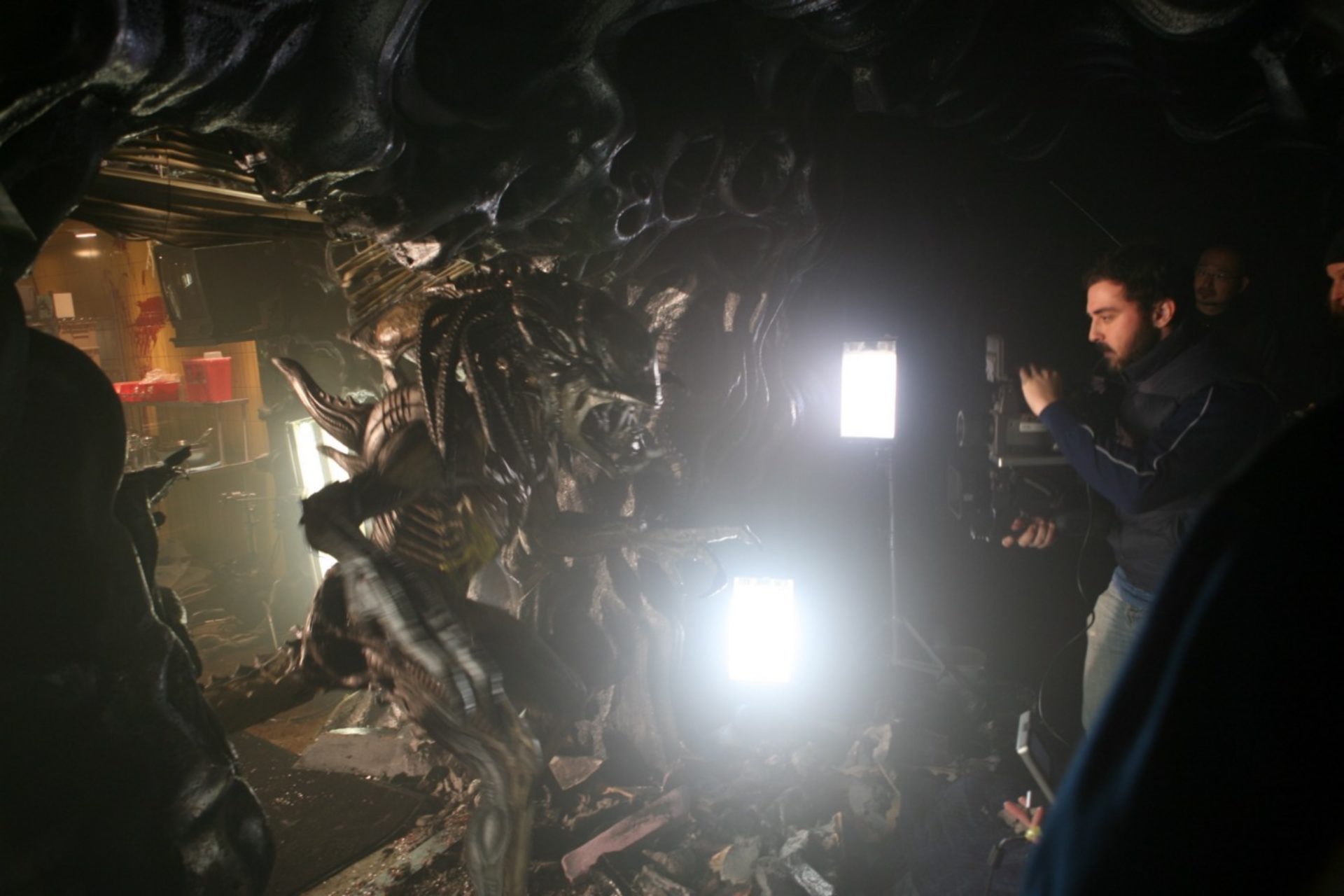
“Something I found, from my VFX days before Sandwich. I was in Vancouver operating all the thermal imagery aka “Predatorvision” for “Aliens vs. Predator: Requiem”. It was really fun and grueling. Just proof that I used to work on movies before I started making commercials.”
I want to hear a little about your venture fund and how that’s working out for you.
I love to participate with the clients that we work with from time to time, as an investor. And it’s a model that we developed early, early on. And to this point I think I have between 40 and 50 portfolio clients. Clients that I’ve done work for that as part of our compensation package we get a little bit of equity instead of some of the cash component. And it’s really exciting to participate in that way, because I didn’t really know much about the venture industry, so I didn’t know whether everything was going to be a hit because it felt like it was going to be a hit, or if they were going to be all failures, or somewhere in between.
One in 10 have turned out be a hit. None of them have really borne out in a huge way yet, but I have done this with some significant unicorn clients that I’m pretty excited about. So, it’s not a model that I’m giving up, just something I’m doing a lot less these days.

“We love working with companies that have new ideas that need to be introduced to the world. But just about every brand needs to explain who they are or what they do and we’re the experts on explanation.”
And I would think that, like you said, having that skin in the game might give you a little bit more credibility with the client.
Yeah. I mean, sometimes they do see it as that extra credibility. If the client sees that you’re willing to take them on as an investment, then they believe the things that you say. It’s not about just earning a buck it’s about really needing things to go well. In the ad world, you are seeing some agencies that are doing more towards building businesses as a model. They’re not just doing client work for hire they’re trying to build businesses themselves using their own sources and assets. I think that’s kind of interesting.
I know you did an article about where we are today with coronavirus and needing to work remotely. If you had to give three pieces of advice to somebody to up their remote working game with video conferencing, what would those be?
I’m a gear nerd, which has been reinvigorated by the pandemic situation, so I realize that I like that idea of paying attention to the fidelity of my setup, my presentations, a little bit more obsessively. So just paying a little bit more attention to your light, to your sound situation, to what camera you’re using. Get a mic that’s a little bit closer to your mouth.

The Camo App from Reincubate launched in July of this year to bring a fresh approach to video quality to the millions of people working from home.
There’s a really cool app called Camo, and it’s a way to use your iPhone as your webcam. I don’t know how many people are aware just how terrible the camera on your MacBook or your iMac really is. It is an absolute garbage piece of hardware for a thing that’s attached to a $2000 or $3000 machine. And I think if Apple had known this was coming, they probably would’ve invested a few cents more into that piece of hardware. One thing that you can do is to attach a separate camera to your laptop. But the easiest solution is to get a little mount for your iPhone, plug it into the USB in your computer, and then use this Camo software, which lets you select your iPhone as your video source. You’re going to look so much better. Just let people see you and let people hear you and the quality of that experience, with higher fidelity, makes it feel like you’re more present with each other.
That’s the thing that I see lacking in my seven-year-old son’s online school Zoom classes, is that sense of presence. And on a high level, we were talking about technology, the purpose of technology before, is that technology is there to enable truer human capabilities, and some of that is interacting with each other. So. we shouldn’t let technology get in the way of that. We should let technology enhance that, so that we do feel like we’re present with each other. I would say for a creative team especially, that presence with each other is very, very important.
One last question. How would you define beautiful thinking?
I bring it all back to patterns and associations. I think that we are, to a large degree, a collection of our pasts and our experiences and our memories. So I think that our brains have the capacity to store our memories and our experiences, and because we have the capacities to associate those memories and experiences with each other, my favorite thing to do is make those associations. How does this thing I just experienced remind me of something that I experienced in the past? And then what can I do with that information, what can I make with that pattern? Can I make something new, can I make something beautiful? That is probably my favorite form of beautiful thinking.


